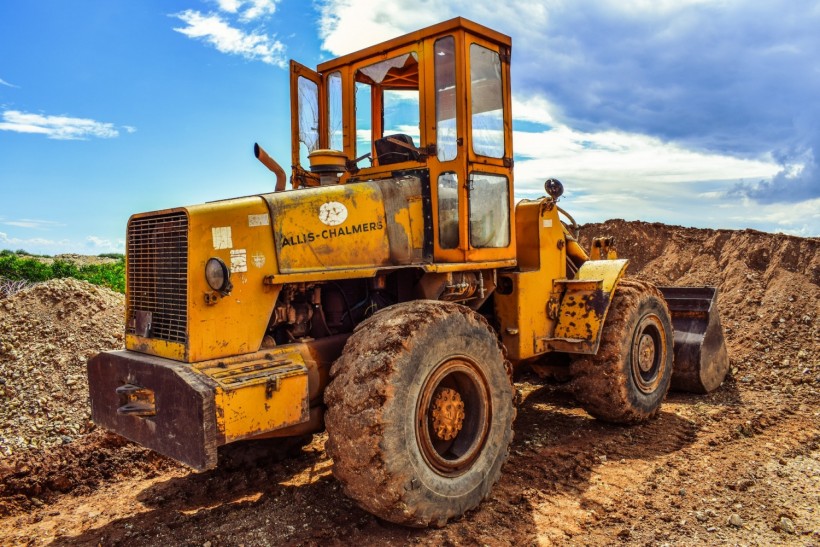One of the contractors' biggest challenges is dealing with construction site erosion. Many things can cause erosion at construction sites, leading to massive loss of topsoil and impacting the environment. Massive topsoil displacement can not only clog waterways, but it can also cause damage to adjacent buildings and pollute water sources. However, every situation demands unique solutions depending on the severity of the soil erosion.
Controlling soil erosion at construction sites is vital for protecting the structure under construction and reducing the environmental impact on the surroundings. Luckily, there are many effective erosion control techniques that can help reduce the overall cost of your construction project and minimize the overall environmental impact. One of the most efficient and inexpensive ways to control erosion at construction sites is hydroseeding, which involves spreading grass seeds over bare land to grow grass and eliminate erosion. Alongside hydroseeding, here are a few other effective ways to control erosion at construction sites:
1. Turbidity barriers
Turbidity barrier is one of the most utilized methods for preventing soil erosion and the consequent migration of water-based contaminants. Typically, they're composed of a floating water-resistant geotextile membrane anchored to a water body's bottom using weights. Turbidity barriers are often utilized as an alternative sediment control.
There are numerous instances where turbidity barriers can be deployed for supplemental sediment control. Today, turbidity barriers are also regarded as turbidity silt curtains. By using scheduling software, contractors can conveniently and easily implement this strategy, which allows for tracking and monitoring every detail concerning the project.
2. French Drains
A French drain comprises an underground piping system often referred to as a drain tile. The tile helps in channeling surface and groundwater to designated exit points. These drain tiles are usually perforated to allow excess water to penetrate beneath the soil toward the exit portions. For ideal performance, French drain installation requires a one inch slope and a horizontal drop of approximately 10 feet. You can also make the French drain installation easier and faster using builder software.
3. MSE Walls
Mechanically stabilized earth walls are another leading soil erosion control technique. Today, this technology is drastically replacing conventional concrete-based retaining walls. MSE walls are structures with alternating layers. These layers are composed of soil reinforcement elements and compacted backfill.
MSE offers numerous benefits over traditional reinforcement walls, including ease of installation and relative speed, so it's no wonder most contractors favor the use of MSE walls. Not only do MSE walls offer flexibility, but they also have seismic resistance and load-bearing capacity. Thanks to these innovative features, MSE walls can be built to reach tall heights without compromising stability.
4. Articulated Concrete Block
Articulated concrete blocks are more flexible and can even form interlocking blocks. However, the blocks' shape, size and weight remain uniform despite the perceived differences. A cabling series is used to interconnect the blocks and hold them firmly. This approach is sufficient for soil erosion control, specifically drainage channels and boat ramp ridges. ACBs can also be molded and easily deployed to any erosion-prone areas.
Endnote
Use the above techniques to control and prevent soil erosion at your construction site. Proper soil erosion control at your construction site will help protect the surrounding areas from pollution and promote sustainable construction.
© 2024 NatureWorldNews.com All rights reserved. Do not reproduce without permission.
* This is a contributed article and this content does not necessarily represent the views of natureworldnews.com



![Tsunami Hazard Zones: New US Map Shows Places at Risk of Flooding and Tsunamis Amid Rising Sea Levels [NOAA]](https://1471793142.rsc.cdn77.org/data/thumbs/full/70325/280/157/50/40/tsunami-hazard-zones-new-us-map-shows-places-at-risk-of-flooding-and-tsunamis-amid-rising-sea-levels-noaa.jpg)
![Climate Change is Reducing Dust Levels Worldwide as Arctic Temperature Warms [Study]](https://1471793142.rsc.cdn77.org/data/thumbs/full/70320/280/157/50/40/climate-change-is-reducing-dust-levels-worldwide-as-arctic-temperature-warms-study.jpg)

